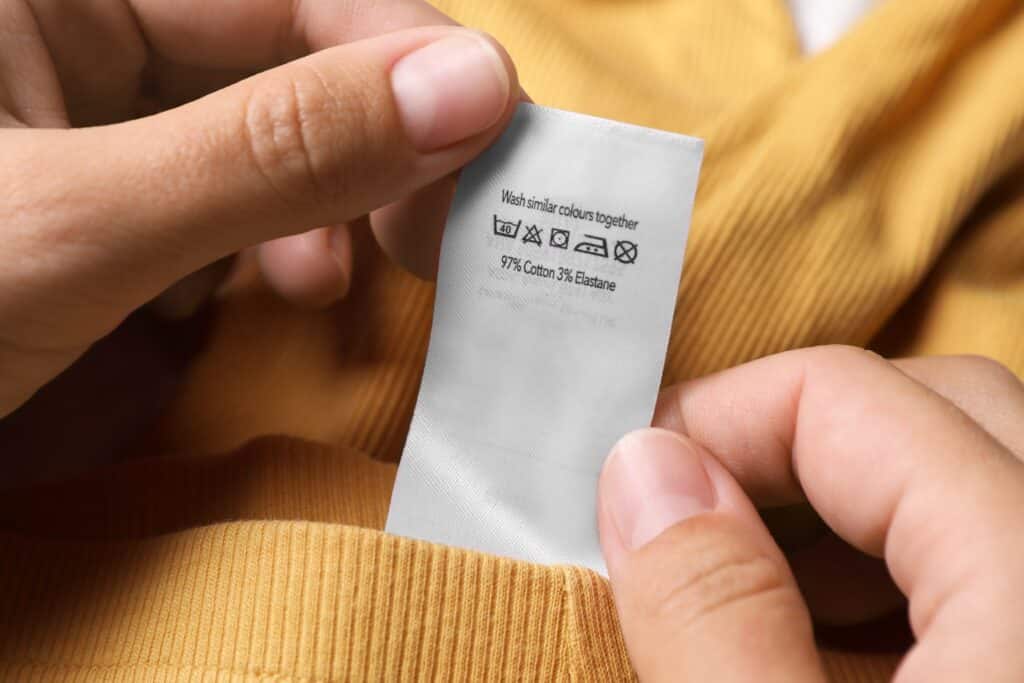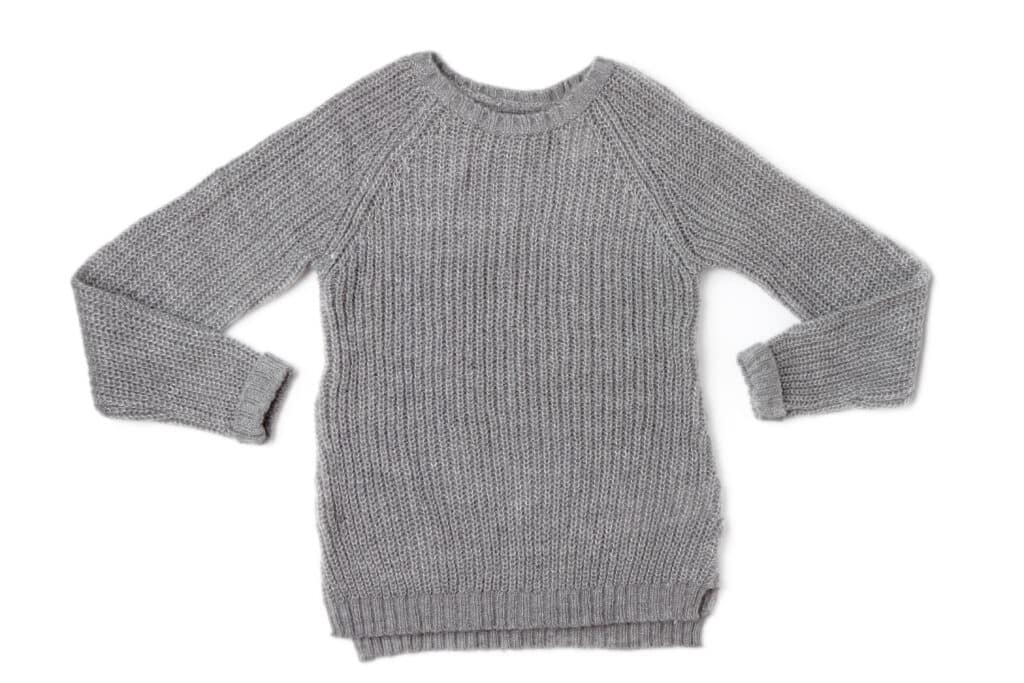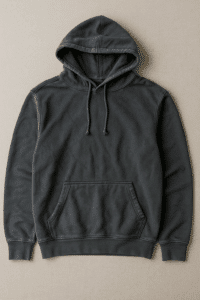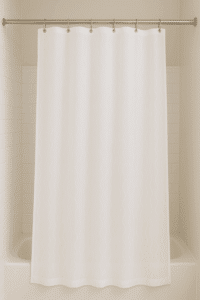Do Clothes Shrink in the Dryer?
Do clothes shrink in the dryer? The short answer: yes—if you’re not careful. Most of us have felt that pang of regret pulling a favorite shirt or pair of pants from the dryer only to find it a size smaller. With the average U.S. household running around 7 loads of laundry per week, it’s no surprise laundry mishaps like shrinkage are common. The good news is that shrinkage isn’t a mysterious or inevitable fate. It comes down to science (heat, water, and fiber chemistry) and how you handle your laundry. Below, we’ll explain what causes clothes to shrink, how to prevent it—from the wash cycle to the dryer—and even how to *unshrink* clothes that accidentally got toasted. Let’s keep your wardrobe fitting just right.

What causes clothes to shrink?
Heat and moisture: Clothes don’t shrink out of nowhere—high heat and water are the primary culprits. When fabrics get wet and warm, their fibers can relax and contract. For example, cotton fibers swell when soaked in water and then tighten up as they dry, leading to that snugger fit afterwards. In fact, a lot of shrinkage actually starts in the washing machine. Washing clothes in hot water can cause fibers to lose the tension they had from manufacturing, making garments shrink a bit even before they see a dryer. (On the flip side, clothes generally won’t shrink in cold water alone because lower temperatures don’t agitate the fibers as much.)
Tumbling and agitation: The dryer’s rotating drum is tough love for your clothes. All that tossing around can cause fibers to mesh closer together. Ever notice the lint in your dryer filter? That’s tiny bits of fabric fiber being beaten off your clothes. As fibers loosen and get knocked free, the weave or knit of the garment can tighten, causing a form of shrinkage called consolidation. Essentially, the mechanical action of washing and drying “bats” the fibers into a closer, denser formation.
Fabric type: What your clothes are made of makes a big difference in shrinkage. Natural fibers like cotton, wool, and linen are much more prone to shrinking than synthetics like polyester or nylon. Why? Plant and animal fibers are naturally stretchy and often get pulled taut during textile production. Later, heat and moisture let them return to a more relaxed (shorter) state. Wool is a notorious shrinker — wool fibers have microscopic scales that can lock together (felting) when exposed to warm water and agitation, causing dramatic shrinkage (that’s how you get doll-sized wool sweaters if you’re not careful). Cotton, while it doesn’t felt, still shrinks a noticeable amount especially in the first wash/dry cycle if it wasn’t pre-shrunk. On the other hand, synthetic fabrics tend to be more stable because their fibers are engineered not to swell or contract as much with temperature changes. But beware: extremely high dryer heat can even affect synthetics (and can actually damage or warp them rather than neatly shrink).
Overdrying: Leaving clothes in the dryer for too long can cause extra shrinkage as well. There’s a point at which clothing is dry, but if heat keeps blasting, the fibers can get even tighter. Natural fibers contain some moisture inherently (cotton fibers, for example, hold a small percentage of water normally). Excessive heat drives off all that moisture, and fibers become brittle and draw up. That’s why a T-shirt might seem *extra* shrunken and stiff if it was baked bone-dry on high heat. Overdrying also contributes to faded colors and set-in wrinkles — and once a shrink-prone garment has shrunk, you can’t always undo it.
In summary, clothes shrink because of a combination of heat, moisture, and motion. The dryer just happens to check all three boxes: it gets hot, it tumbles your clothes, and it removes water rapidly. But with some smart laundry habits, you can avoid those “Honey, I shrunk the laundry” moments.
How to prevent clothes from shrinking
No one wants to turn their adult-size sweater into a kid’s sweater. The best strategy is prevention. By adjusting a few parts of your laundry routine, you can *greatly* reduce the chance of shrinkage. Here are some clean-obsessed tips to keep your clothes the same size going in and coming out:
- Wash in cold water: Whenever possible, choose cold or cool water settings for your wash. Hot water can cause fibers (especially cotton, wool, and other natural materials) to contract. Cold water is much gentler on fabrics — it gets them clean without the thermal shock. (Bonus: washing in cold saves energy and prevents color fading too.) It’s no wonder over half of Americans now wash most loads in cold water to protect their clothes and cut utility bills. If you’re worried that cold water won’t clean well, today’s detergents are formulated to work great in cold temps.
- Use low heat (or no heat) in the dryer: High heat is the #1 enemy for shrinkage. Set your dryer to low heat or the delicate cycle, which uses gentler warmth. It may take a bit longer to dry, but your clothes will thank you. Better yet, if your dryer has an “air dry” or “tumble dry no heat” setting, use it for items that are prone to shrinking. The tumbling action will still dry the clothes (it might take longer as moisture evaporates at room temp) without cooking the fibers. Also, avoid the “high” or “heavy” dryer setting for anything but towels or sturdy linens. High heat not only shrinks fabric, it can also cause colors to fade or even set stains permanently (always treat stains before drying—see our guide on how to remove stains from white shirts for tips).
- Don’t over-dry and do remove promptly: Ever set a dryer and forgotten about it for an extra hour? That’s a recipe for shrunken, misshapen clothes. Run the dryer just until items are *almost* dry (slightly damp to the touch) and then take them out. This approach, sometimes called “air drying the last 5%,” spares your clothes from that final prolonged heat blast. Many modern dryers have moisture sensors or timed cycles to help with this. If yours doesn’t, err on the side of a shorter cycle and check the clothes. The moment they’re dry (or just shy of it), pull them out. Not only does this prevent additional shrinkage, it also reduces wrinkles and makes folding easier.
- Air dry when you can: The surest way to avoid dryer shrinkage is not to use the dryer for certain clothes. Hang-drying or flat-drying is the gentlest drying method. After washing, give your clothes a good shake and hang them on a clothesline or drying rack. For heavy items like wool sweaters or anything that might stretch out of shape when hung, lay them flat on a towel or sweater drying rack. Room-temperature air might take longer to dry your laundry (patience is key), but it completely bypasses any heat damage. Many households make it a habit to air dry items that are high in cotton or wool content, or clothes that fit just right and can’t afford any shrinkage. If you’re sun-drying outside, try to avoid blasting direct sunlight on bright colors all day (to prevent fading) — otherwise, air drying is a win for your clothes.
- Read the care labels: Those little symbols on your garment’s tag are basically the manufacturer waving a flag saying “this is how to NOT ruin this item.” Yet a lot of us ignore them—nearly 1 in 4 people never bother to check the care label. Take a second to read whether that shirt or dress is “tumble dry low” or “lay flat to dry” or “dry clean only.” If the tag shows a little dryer symbol with an “X” through it, keep it far away from your dryer. If it says to hand wash or use cold, follow that guidance. When in doubt about what the hieroglyphics on a tag mean, consult a fabric care symbols guide (here’s a handy reference chart). Following those instructions will save you from a lot of laundry heartache. It’s a small step that can prevent big mishaps.
- Sort and separate laundry by fabric type: Mix a heavy cotton hoodie with lightweight rayon shirts in a hot dryer, and you’ve got a scenario where the hoodie might still be damp while the rayon top has overdried and shrunk. Try to dry items of similar weight and fabric together. That way, everything in a load has a more equal drying time. Also, keep an eye on garments that are 100% cotton, wool, or other high-shrinkage fibers—consider drying those in a separate, cooler load or air drying them entirely. By sorting out the jeans, towels, and sweats (which can handle a warmer dryer) from the delicate blouses, athletic wear, or mixed-fabric garments, you can tailor your drying approach for each group and avoid over-baking the more sensitive stuff.

Put simply, preventing shrinkage means being gentle: cooler water, lower heat, less time, and attention to what each fabric prefers. These habits may add a few minutes of effort, but they can extend the life of your wardrobe (and keep your clothes fitting as they should). And if all of this sounds like a lot to remember, don’t worry—later we’ll talk about how a professional service can handle these details for you.
How to dry clothes without shrinking
Drying clothes without shrinking them is all about removing moisture without blasting the fibers with high heat. You actually have a few options to achieve this. First, as mentioned, use your machine’s lowest heat setting or a specialty cycle like “delicate” or “gentle dry.” These settings use a cooler air temperature and often a slower spin, which is gentler on fabrics. Yes, the dryer will run a bit longer on low, but it gradually dries the clothes with much less risk of shrinkage compared to a 40-minute scorcher on high.
If available, the ideal tool is an “air dry” or “air fluff” option on your dryer, which uses no heat at all—just room-temperature air tumbling through. This is fantastic for items like wool, cashmere, or certain sportswear that you absolutely don’t want to expose to heat. Not every dryer has this, but if yours does (for example, at our self-service laundry we make sure all dryers have an air-only setting), take advantage of it for delicate loads.
Another key technique is short-cycle + hang dry. Instead of drying clothes completely in the machine, you can run them on low heat for part of the time—just enough to get them about 70-80% dry. While they’re still slightly damp, take them out and immediately hang them up or lay them flat to finish drying. This way, you’ve used the dryer to speed things along, but you’ve avoided that last phase of high heat when clothes are driest (and most susceptible to shrinking). For example, you might tumble a pair of jeans on low for 15-20 minutes, then hang them by the waistband to air dry the rest of the way. They’ll still dry in a reasonable time frame, and you’ve spared them from the hottest part of the dryer cycle.
Also, be mindful of how you load the dryer. As mentioned in the prevention tips, drying heavy and light items together can lead to trouble. A light cotton t-shirt might be bone-dry (and cooking) before a heavy sweatshirt is done. So if you can, group laundry by similar fabric weight or dryness rate. If you can’t, then pull out the lighter pieces mid-cycle and let the heavier ones continue. It’s okay to stop the dryer and check – your clothes don’t mind a little interruption if it saves them from shrinking.

One underrated trick: use your dryer’s cool-down feature if it has one. Many dryers have a last few minutes of tumbling with no heat. This helps cool garments down gradually. If your machine lets you manually add a cool tumble at the end, do it – clothes come out closer to room temperature rather than scorching hot, which means fibers aren’t contracting rapidly as you pull laundry out. And finally, remember to never ignore those “dry flat” or “hang dry” labels. If the tag forbids the dryer, trust that and choose a no-heat method. You’ll avoid both shrinkage and potential damage (some garments like activewear or lingerie have elastic or trims that can melt or warp in heat).
How to unshrink clothes (if possible)
We’ve all been there: that sinking feeling when you realize your favorite sweater or pair of pants looks more fit for a toddler than for you. Before you donate it to a doll wardrobe, there are a few tricks that might *unshrink* the garment — or at least get it back closer to its original size. Results aren’t guaranteed, but it’s often worth a try.
The basic unshrinking method: Relax and re-stretch the fibers. When a cotton or wool item has shrunk, the fibers are bunched up. We need to gently relax them and pull them back out. Here’s how to do it safely:
- Fill a sink or basin with lukewarm water. Mix in a small amount of mild conditioner or baby shampoo (about a tablespoon or two). This helps soften and lubricate the fibers.
- Immerse the shrunken garment in the water and let it soak for about 30 minutes. Don’t use hot water — just comfortably warm. As it soaks, the fibers will loosen up a little.
- After soaking, do not rinse with cold water (that could shock the fibers tight again). Instead, gently press out excess water from the garment. Support it well—wet fabric can be heavy. *Do not wring or twist* the clothing, as that can distort it.
- Lay the garment flat on a clean, dry towel. Roll the towel up with the clothing inside it, gently pressing as you go. This absorbs extra moisture so the item is damp but not dripping.
- Unroll the towel and transfer the damp garment to another dry towel or a flat surface. Now, very gently stretch the clothing back toward its original size. For a shirt, for example, you’d lightly tug the body and sleeves outward. Go slow and be careful to pull evenly (you don’t want one arm longer than the other!). You might even pin the edges to the towel in the desired size, or place heavy objects at the ends of the fabric to hold the shape.
- Leave the garment to air dry flat in this stretched-out position. Check it occasionally as it dries and give a tiny tug here or there to guide it into shape. Once completely dry, it should hopefully appear closer to the dimensions it was before the mishap.

This method works best on natural fibers like cotton, wool, or rayon blends. Cotton t-shirts, for instance, often respond well and can regain most of their size. Wool sweaters can sometimes be coaxed back a size or so, depending on how severely they felted. (If a wool item came out extremely felted—think doll-sized and rigid—it may not fully recover. In that case, chalk it up as a lesson learned, unfortunately.) Avoid overstretching during this process; it is possible to stretch a garment out of its intended shape if you pull too hard. The key is a gentle, even hand.
After an attempted unshrinking, the item may not be *exactly* as it was originally, but you’d be surprised how much improvement you can often achieve. And even getting another inch or two of width and length back can make the difference between unwearable and comfortably wearable. In any case, once a garment has scared you by shrinking, you’ll know to be extra cautious with it in future washes.
Pro tip: If you’re nervous about unshrinking a treasured piece on your own, consider taking it to a professional cleaner. They sometimes can perform a similar stretching treatment with steam and know just how much to tug. But there’s no magic wand — they’re essentially doing the above method with professional finesse.
Of course, the ultimate way to “unshrink” clothes is prevention: don’t let them shrink to begin with. By now, you know the tricks to do just that.
Finally, let’s talk about an even easier solution: sidestepping the shrinkage drama altogether by letting someone else handle the laundry (someone who deals with these issues for a living). Laundry is one of those chores that takes time and attention to do right. If you’d rather not spend your evenings strategizing about wash temperatures and dryer settings, Spincycle can help keep your wardrobe safe.
We’re clean-obsessed when it comes to protecting your clothes. Our wash-and-fold service is designed to return your clothes fresh, fluffy, and exactly the same size as when you gave them to us. We use water temperatures and dryer settings that are appropriate for each fabric (no guessing on your part), and we even employ ozone sanitization to deep-clean your laundry at lower temperatures. That means a truly hygienic clean that’s also gentle on fibers. Have a sweater that you’re worried about? We’ll air dry or lay it flat as needed. Those favorite jeans that fit just right? We know to avoid blasting them on high heat. Every garment is cared for by laundry pros who *anticipate* issues like shrinkage and act to prevent them.
If you prefer doing laundry yourself but want a space that makes it easier, our self-service laundromat offers modern, easy-to-use machines with all the settings you could need. You’ll find large, gentle washers (perfect for cold washes) and plenty of dryer options from low-heat to air-only, plus room to hang dry items on site if you choose. And if you ever have a question, our attendants are happy to help – it’s a neighbor-approved space where you’re not tackling laundry alone.
For those who have truly had it with laundry shrinkage (and laundry in general), we’ve got you covered with our pickup and delivery service. Just schedule a pickup, and we’ll handle the rest. You get your clothes back clean, ozone-sanitized, **and** properly dried with no shrink surprises – all folded nicely and ready to go in your drawer. Meanwhile, you get to spend your reclaimed time on something you actually enjoy. It’s like having a laundry expert neighbor do your washing for you, with the convenience of never leaving home.
Final thoughts
Clothes can shrink in the dryer, but now you’re equipped with the know-how to prevent it. Use cold water, low heat, and a bit of patience, and you’ll keep your favorite outfits fitting great. Check those care labels, and don’t hesitate to air dry or take special care with the pieces that matter most. And remember, if you ever need an extra hand (or simply want to liberate yourself from laundry day), Spincycle is here to help make sure your clothes stay the size they’re meant to be, wash after wash. Keep your wardrobe worry-free and wear your clothes, not the other way around!






